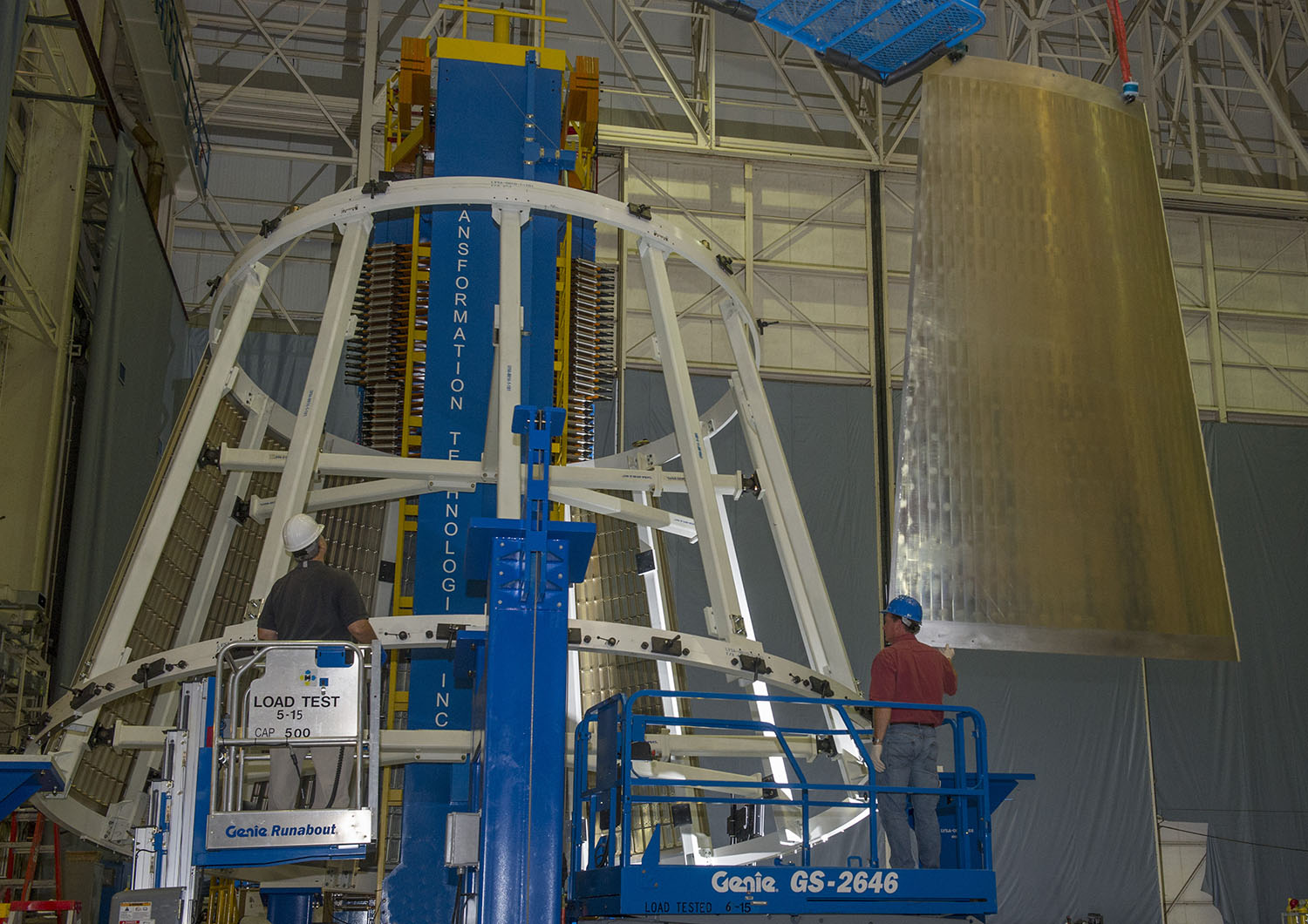Strong connection points between the stages of NASA’s Space Launch System (SLS) — the agency’s advanced launch vehicle for exploration beyond Earth’s orbit into deep space — are essential to ensure that the rocket will withstand the loads it may experience during flight. The Launch Vehicle Stage Adapter, or LVSA, plays an important role in connecting two major sections of the rocket — the core stage and the upper stage.
The upper stage, known as the Interim Cryogenic Propulsion Stage, gives the Orion spacecraft the big, in-space push needed to fly beyond the moon before the spacecraft returns to Earth for the first flight test of SLS. The Orion spacecraft is connected to the upper stage with the Orion Stage Adapter.
Welding of the major panels of a test version of the LVSA began in August at NASA’s Marshall Space Flight Center in Huntsville, Alabama, where the agency manages the SLS program.
Marshall engineers, in close partnership with prime contractor Teledyne Brown Engineering of Huntsville, are applying friction-stir-welding capabilities and equipment. The friction-stir-welding process joins large pieces of the LVSA by stirring their edges together without completely melting the metal, resulting in a stronger weld than in standard welding practices. The Marshall weld team also developed an innovative modular tooling concept, which can make different size adapters using the same machinery – reducing costs and build time.
“We are starting to see the test version of the LVSA take shape,” said Brent Gaddes, adapter manager for SLS. “This is a unique structure, which presents some challenges due to its large size and conical shape. However, we have a very capable team, both with Marshall and Teledyne Brown, and are building on our experience with the stage adapter that was used on Orion’s first test flight in 2014.”
Engineers have already completed structural test articles of the Orion stage adapter, core stage simulator and Orion spacecraft simulator. A test article for the interim cryogenic propulsion stage is currently in production at United Launch Alliance in Decatur, Alabama. When the test versions of all the parts are completed, engineers will stack them and move the 56-foot tall structure to a Marshall test stand for testing to verify the integrity of the hardware and ensure it can withstand the loads it may experience during flight.
The first flight test of the SLS will feature a Block I configuration for a 70-metric-ton (77-ton) lift capacity and carry an uncrewed Orion spacecraft beyond low-Earth orbit to test the performance of the integrated system. As the SLS evolves, it will provide an unprecedented lift capability of 130 metric tons (143 tons) to enable missions even farther into our solar system.
For more information about SLS, visit:
Kim Henry
Marshall Space Flight Center, Huntsville, Alabama
256-544-0034
kimberly.m.henry@nasa.gov




























